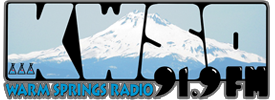Local News
Reservation UAV program taking off
Reservation UAV program taking off
The Warm Springs unmanned aerial vehicles testing program is showing real potential for revenue and jobs on the reservation.
Three new jobs could be open within a few months, said Don Sampson, interim chief executive officer of Warm Springs Ventures.
These jobs are the UAV testing business developer, the project manager, and range manager.
The business developer would work with and recruit the UAV companies that are in need of a testing site.
The project manager would oversee engineering, making sure the flight plans, for instance, are properly engineered.
The range manager would be at the sites ensuring that the tests are conducted in compliance with regulation.
These initial jobs are possible because the Oregon Infrastructure Finance Authority is providing funding for development of UAV testing in the state.
Up to $1.5 million will go toward the UAV testing infrastructure, and up to $1 million for testing operations, Sampson said.
Some funding could be used for scholarships. Central Oregon Community College has a two-year UAV program, and Ventures would like to have tribal members pursue this growing field, Sampson said.
The COCC program will be using the Warm Springs test range for training. The UAV field is perfect for young people who are already computer literate, he said.
Ventures would then look to hire UAV interns to gain further experience in the field.
“This is a growing industry, and Warm Springs is the only tribe in the nation that is going to have a test range,” Sampson said.
There will be direct revenue to the tribes from the fees charged to the companies that use the reservation test range. There are other opportunities as well:
Kah-Nee-Ta will see ancillary revenue, as companies will need somewhere for their testing teams to stay. Ventures and the resort are looking at developing a simulation center and meeting space for the companies.
The Warm Springs Telecom could be involved, in the data transfer aspect of the UAV systems.
The tribes are in a position to bring in billion-dollar companies that need to test their UAV systems.
Five sites
The Federal Aviation Administration approved the whole reservation as a UAV test range, but the actual test sites are much more narrowly defined. And the UAVs cannot travel beyond a one-mile radius from the ground site.
There are five sites that are being looked at as potential test sites: On the Metolius Bench, near Kah-Nee-Ta, two sites on Miller Flat, and one at Sidwalter.
The UAVs would not be flying randomly around the reservation. “They have very specific flight patterns,” Sampson said. “And there are privacy conditions that they have to comply with.”
The companies would come to the tribes for approval to conduct a test flight. The tribal UAV program would put out a notice that the flight is going to happen, and would then have a tribal UAV person present during the test.
The BIA has already show interest in the program, Sampson said, as UAVs are seen as a future tool in fighting wild land fires.
The BPA and other utilities have many miles of lines that require regular inspection, and this is another potential use of the UAVs.
Natural Resources could use the vehicles for wildlife inventories. The number of potential uses for UAVs is large, which is why the field is growing fast.
Other countries are already using the systems more extensively for domestic purposes than the U.S.
The FAA last year approved the test sites to get the U.S. on track for safe use of the UAVs.
